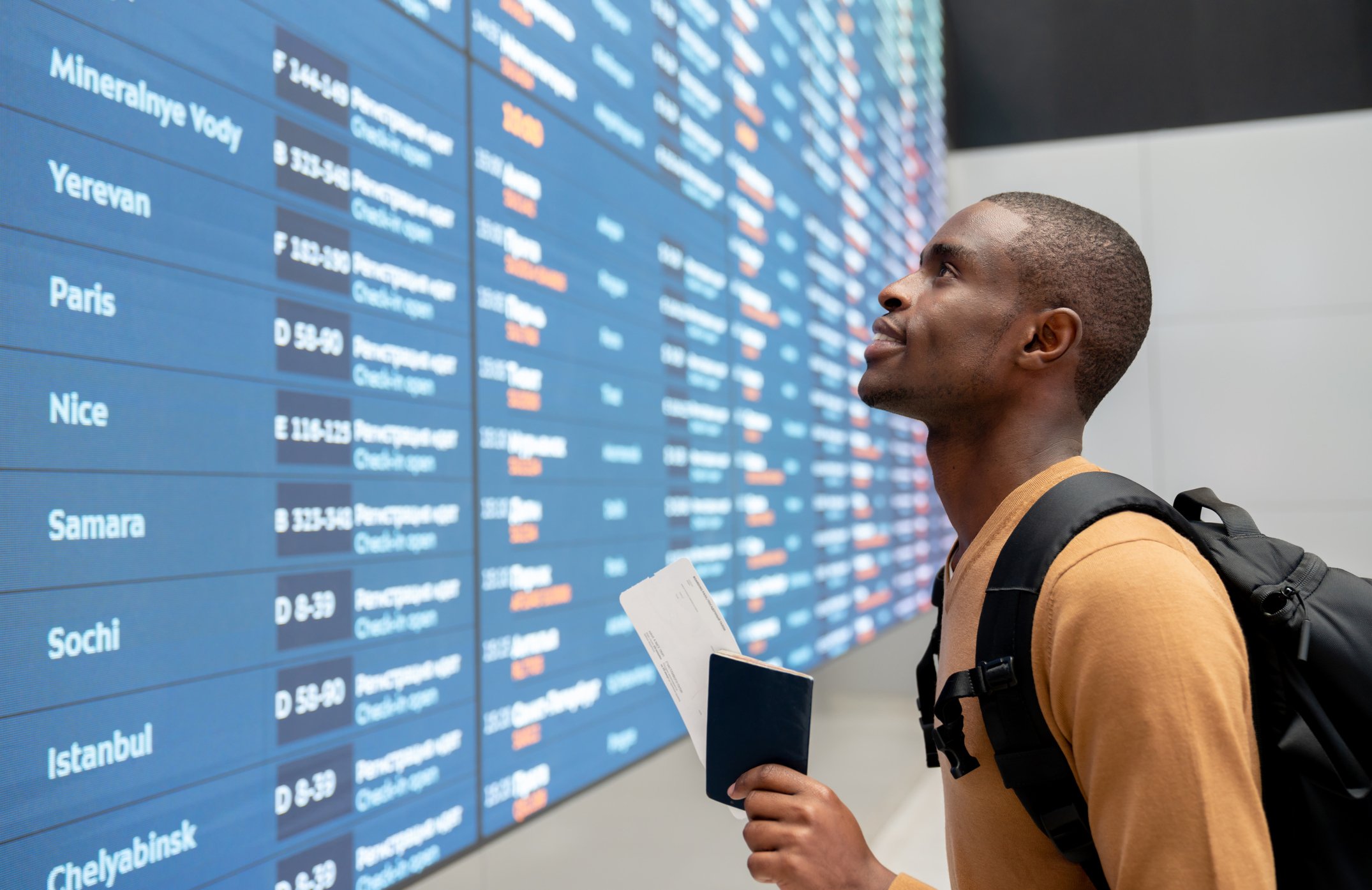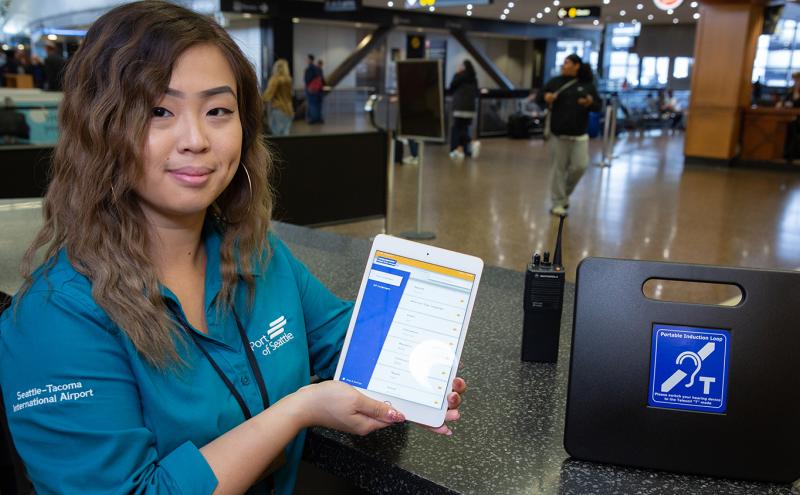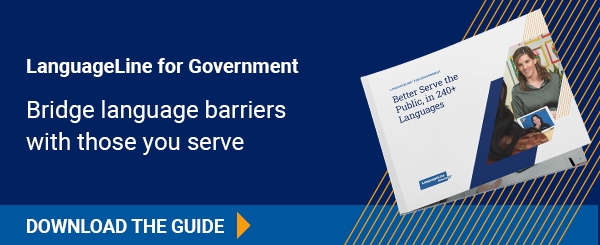
Families from China. Couples from France. Businesspeople from India. Sitting in the concourse of SeaTac International Airport, a person could be forgiven for thinking they were watching the world pass by.
The airport serves over 46 million passengers each year, an increase of 2 million travelers from the year before. The increase in traffic was due to several factors, a major one being the return of international travel. SeaTac (also known as Seattle Airport) is a gateway to the Pacific Rim, while also offering direct flights to most of Europe’s major cities.
Travelers coming through last year spoke more than 200 languages. In fact, an astonishing 15% of all SeaTac passengers did not speak English as their primary language. Another 27,000 travelers (or 1.5%) were Deaf or Hard of Hearing.
According to the Port of Seattle, the government agency that oversees the airport, this percentage has been steadily climbing in recent years as SeaTac serves more and more travelers from around the world. Now the 10th busiest airport in the United States, SeaTac requires a comprehensive language access plan that is second-to-none among travel hubs.
LanguageLine is proud to be SeaTac’s language access partner. With a reinforced commitment from the Port of Seattle, we continue to support the airport’s efforts to cater to the needs of its dynamic traveler base.
“You see the diversity of the world come through SeaTac,” said Stephen Metruck, executive director of the Port of Seattle. “You see it in the languages spoken and the cultures represented. We serve travelers from over 200 countries. We want each one to feel comfortable and confident at SeaTac.”
A Multilingual Approach
SeaTac’s language access program is buffered by three main pillars:
- Improved customer service
- Increased safety
- Promotion of diversity and inclusion
The airport has implemented several key language access initiatives, including:
- Interpreting services: SeaTac offers language assistance services to travelers who need help communicating with airport staff. These services are available through LanguageLine in more than 240 languages. Any SeaTac staff member can connect with an interpreter on-demand through the LanguageLine app or over the phone. This one-touch service can be requested at any time. It is available in video and audio-only formats.
- Multilingual signage: SeaTac has signage in multiple languages throughout the airport, including in Spanish, Chinese, Japanese, Korean, Vietnamese, Russian, and Tagalog. This signage is posted in high-traffic areas, such as baggage claim, ticketing counters, and security checkpoints.
- Online translation services: SeaTac’s website can be translated into more than 100 languages. This allows travelers to access information about the airport and its services in their preferred language.
“Language access is essential for creating a welcoming and inclusive environment,” Metruck said. “When travelers from all over the world can communicate with airport staff in their preferred language, they feel more welcome and included.”

SeaTac is also working to improve its language access by:
- Training airport staff in cross-cultural communication: This training helps airport staff to understand the cultural differences of travelers who speak other languages. It also helps them to communicate more effectively with these travelers.
- Developing culturally appropriate materials: SeaTac’s brochures and maps are designed in a variety of languages and meant to reflect the cultures of the communities to which they’re targeted. These materials help travelers understand the airport and its services in their preferred language.
Operational Efficiency
Language access also adds enormous operational efficiencies to vibrant travel hubs like SeaTac.
- Streamlined Communication: By offering real-time language support, LanguageLine enables effective communication between airport staff and passengers. This helps reduce misunderstandings, delays, and the need for repeated explanations, improving overall efficiency and customer satisfaction.
- Cost Reduction: SeaTac can access a wide range of language services on-demand without the need to employ a large team of in-house interpreters or language specialists. This allows the airport to be more efficient, reduce costs, and allocate resources effectively.
- Enhanced Workflow: Our technology and platform provide airports with streamlined workflows. Staff can easily request interpretation assistance, track usage, and manage language needs through a centralized system. This helps optimize processes, reduces administrative burden, and ensures smooth coordination.
- Scalability and Flexibility: Airports often experience fluctuations in passenger volumes and language demands based on flight schedules and seasons. Our scalable services allow airports to easily adjust to varying language needs.
Interpretation for Customs and Border Protection
LanguageLine also provides language support for SeaTac Customs and Border Protection staff processing inbound passengers from abroad. Leadership shifted to on-demand interpretation because it was difficult and inefficient for the airport to staff bilinguals at the odd hours airplanes would arrive, and to cover unexpected languages.
Now every officer at a Customs and Border Protection booth has access to on-demand interpretation with more than 240 languages via their phones and wireless devices.
Support from the Port
The Port of Seattle, which oversees SeaTac, has also adopted a language access policy to address disparities in access to its services. This policy ensures equal opportunity for all individuals, regardless of language, culture, or physical ability. As with the airport, the Port aims to improve communication, enhance customer service, and make facilities and programs more accessible through their language access plan.
Language access is not just a matter of convenience; it is a fundamental right for individuals seeking government services. The Port’s commitment to language access aligns with the requirements of Title II and Title VI of the Americans with Disabilities Act, which mandates equal access to government services.
LanguageLine Can Help
By placing an enormous prioritization on language access, SeaTac and the Port of Seattle are taking significant steps toward creating an inclusive environment for all.
LanguageLine is proud to support SeaTac and the Port in these language access initiatives, just as we are proud to partner with similar major travel hubs throughout the United States. We invite you to contact us so that we can learn more about the language challenges and opportunities that lie within your organization.

